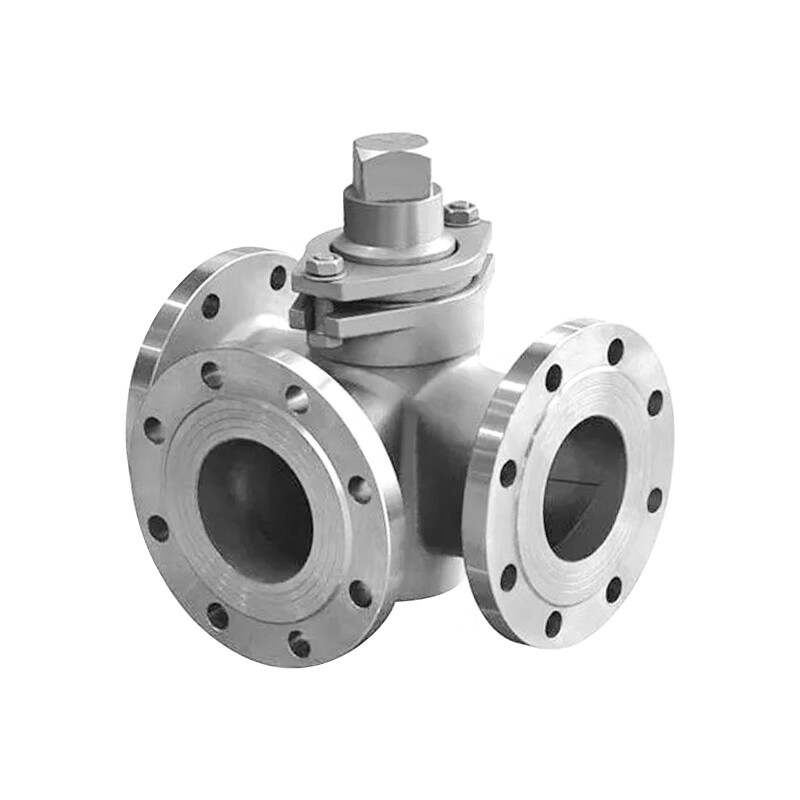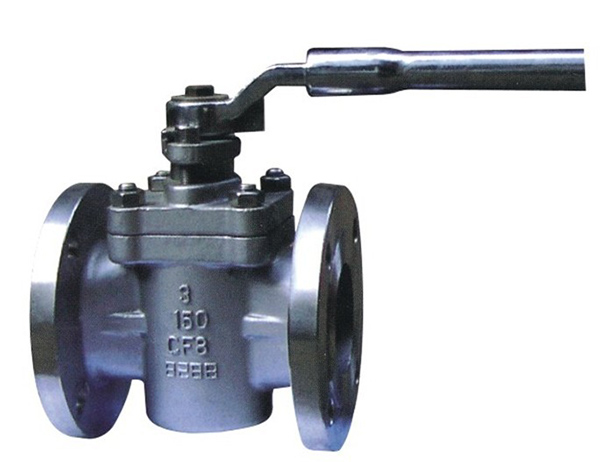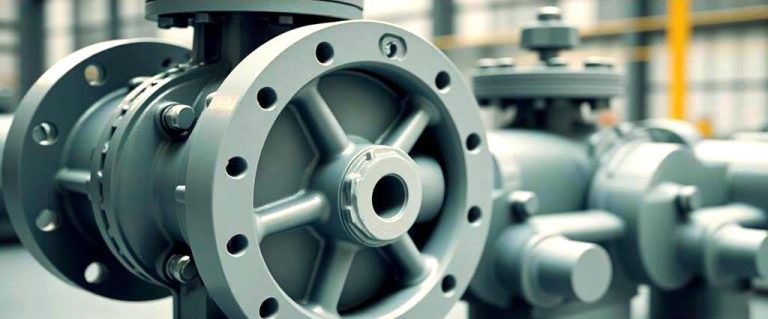Types and Applications of Plug Valves
Ⅰ.Classification of plug valves.

A plug valve opens and closes by rotating a plug around the axis inside the valve body’s central cavity. In pipelines, it is primarily used to cut off, distribute, and change the flow direction of media.
An important characteristic of plug valves is their easy adaptation to multi-channel structures, allowing a single valve to have two, three, or even four different flow paths. This simplifies pipeline system design, reduces the number of valves, and minimizes the need for additional connecting components in equipment.
1. Plug valves are generally classified into three types.
Clampyte plug valve.
These valves do not have packing. Sealing between the plug and body relies on tightening the nut beneath the plug. They are typically used in applications with a nominal pressure (PN) ≤ 0.6 MPa.
Gland type plug valve.
The valve body contains packing material, and sealing is achieved by compressing this packing. These valves offer better sealing performance and are widely used in applications with a nominal pressure (PN) of 1.0 MPa. The screw beneath the valve body can adjust the tightness between the plug and body.
Self-sealing plug valve.
Sealing between the plug and body is primarily achieved through the pressure of the medium itself. This design is commonly used for air media. The spring beneath the structure provides pre-tightening and compression.
2. Other Types of plug valve.
Based on channel configuration, there are three-way and four-way plug valves, which are often used for media distribution.
Straight-through plug valves.
Fluid flows straight through the valve, with inlet and outlet channels aligned. Simple structure with low flow resistance, suitable for applications requiring minimal resistance.
3 way plug valves.
Feature three channels, enabling flow division, confluence, or direction change. Widely used in industrial processes such as chemical and petroleum industries.
Based on sealing type, it can be further classified into soft-sealed and hard-sealed plug valves.
- Soft-sealed plug valves: Use soft materials (e.g., rubber, plastic) as seals, suitable for low-pressure, normal-temperature, or corrosive media.
- Hard-sealed plug valves: Employ hard materials (e.g., metal, ceramic) as seals, ideal for high-pressure, high-temperature, or abrasive media.
Lubricated plug valve.
In recent years, various plug valve designs have been developed to expand their applications. One example is the lubricated plug valve, which uses forced lubrication to create an oil film between the plug and body surfaces. This improves sealing performance, reduces operating torque, and protects the sealing surfaces from damage. The lubricant composition is determined by the medium’s properties and temperature.
Ⅱ.What are the sizes of plug valve class 1500.
Class 1500 plug valves are available in a variety of sizes. The common nominal diameters (DN) and corresponding inch – sizes are as follows4:
| Nominal Diameters | Inch |
| DN15 | 1/2″ |
| DN19 | 3/4″ |
| DN25 | 1″ |
| DN32 | 1 1/4″ |
| DN38 | 1 1/2″ |
| DN51 | 2″ |
| DN64 | 2 1/2″ |
| DN76 | 3″ |
| DN102 | 4″ |
| DN127 | 5″ |
| DN152 | 6″ |
| DN203 | 8″ |
| DN254 | 10″ |
| DN305 | 12″ |
The above are common sizes, and there may be some differences among different manufacturers. In addition, for specific engineering applications, the size of the plug valve needs to be selected according to the actual pipeline diameter, flow requirements, and pressure drop conditions.


III.Applications of plug valves.
Key Features.
- Easy to operate, with quick and effortless opening/closing.
- Low flow resistance, resulting in significant energy savings.
- Compact structure, small size, and light weight for easy maintenance.
- Excellent sealing performance ensures safe fluid transmission.
- Flexible installation orientation, allowing arbitrary media flow directions.
- Smooth operation with minimal vibration and noise.
Applications.
Plug valves are widely used in various pipeline systems across industries including chemical, petroleum, natural gas, food processing, pharmaceuticals, paper manufacturing, and water treatment. Different types of plug valves offer unique advantages in specific applications.
Example of selection criteria.
| Application scenarios | Fitting Type | Dependable Strength |
| Highly corrosive media | Hard-sealed plug valve | Wear-resistant, high-temperature and high-pressure resistant |
| High hygienic requirements | Sanitary three-way plug valve/ quick-install plug valve | Easy to clean, materials comply with food and drug standards |
| Complex flow direction control | Three-way plug valve/ four-way plug valve | Realize flow division, confluence, and multi-directional flow conversion |



